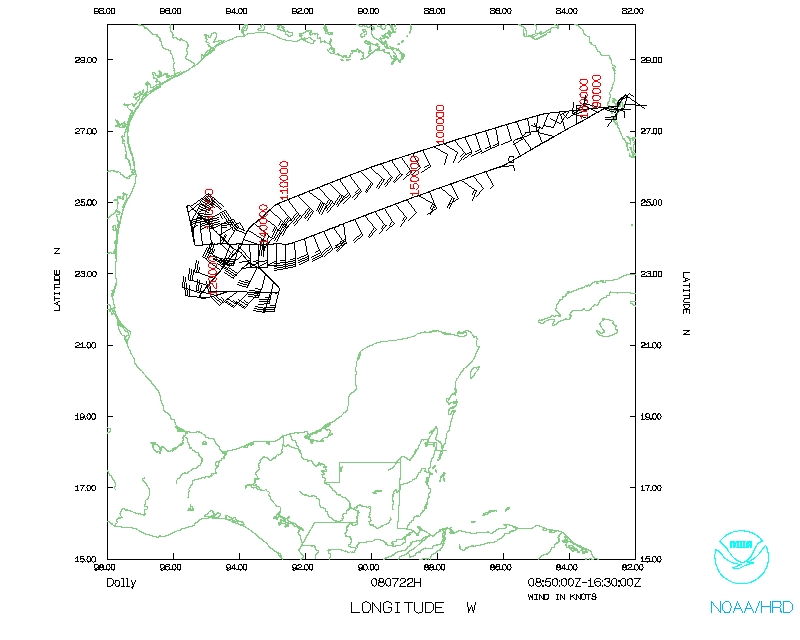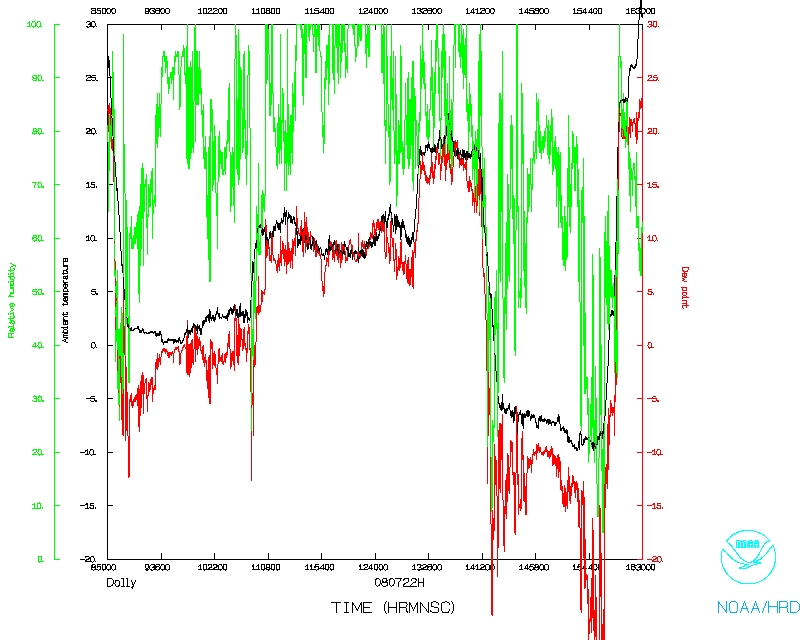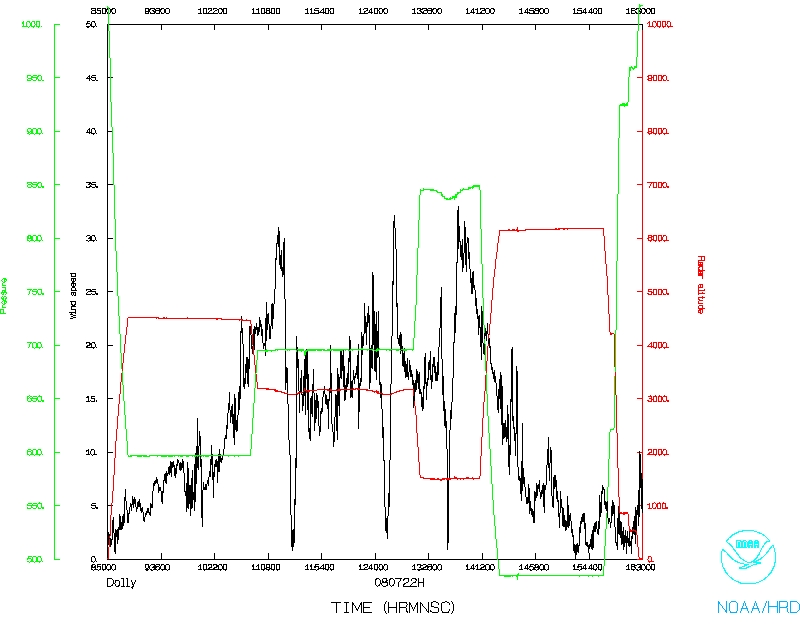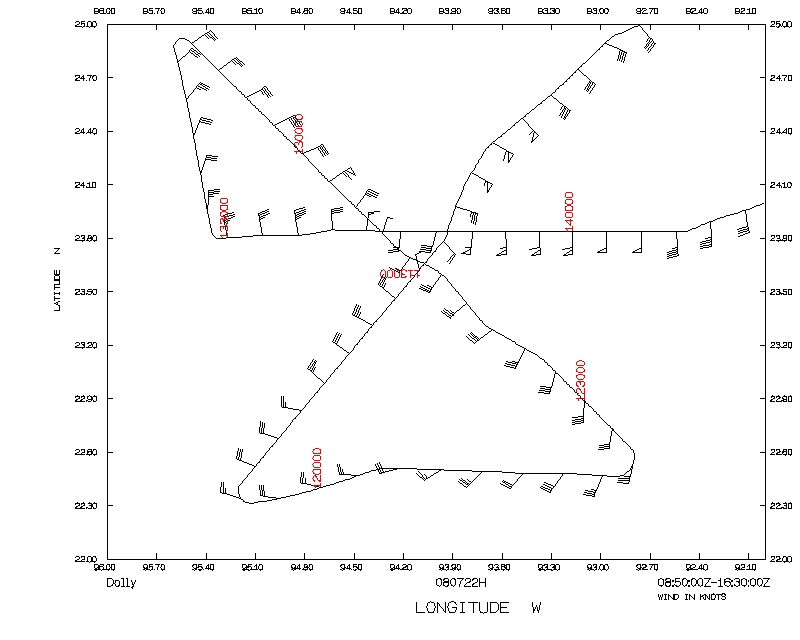Mission Summary
20080722H1 Aircraft 42RF
Dolly Tail Doppler winds mission 2008
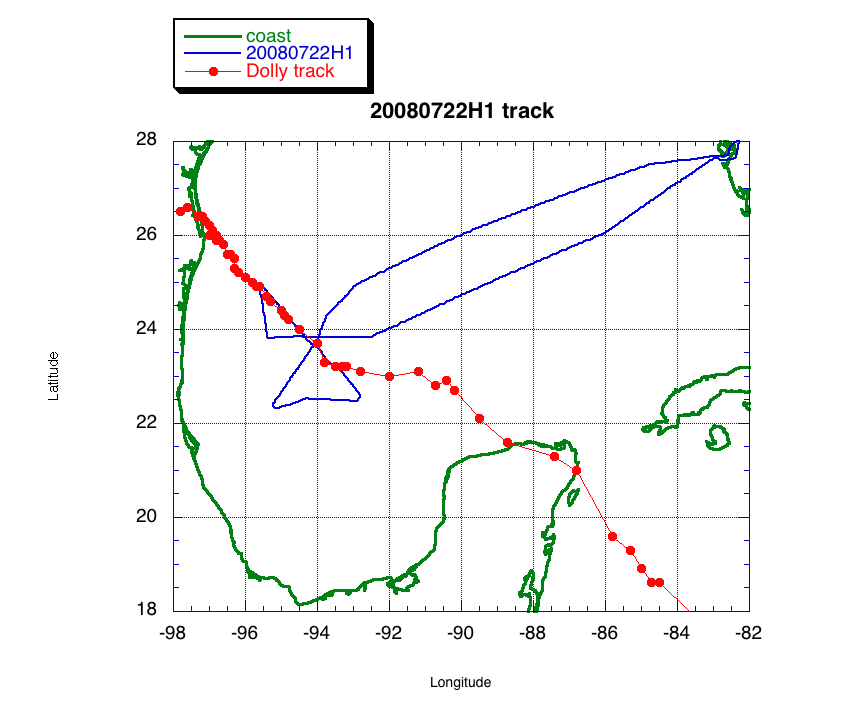
Scientific Crew (42RF)
| Lead Scientist | Mike Black |
| Doppler/Dropsonde Scientist | Sylvie Lorsolo |
Flight Crew (42RF)
| Pilots | Barry Choy
Al Girimonte |
| Flight Director | Barry Damiano |
| Navigators | Tom Gallagher
Ryan Kidder |
| Flt. Eng. | Greg Bast
Steve Wade |
| Elec. Tech | Bill Olney
Joe Bosko |
Mission Plan :
This was to be the 5th flight in a series of flights into Tropical Storm Dolly
(2 each from N42 and N43 previously), which was strengthening in the western
Gulf of Mexico as it headed NW toward the southern Texas coast. The mission
objectives were a combination of reconnaissance fix responsibility at 1200 UTC,
Doppler wind analyses and transmission for NCEP and HRD, overflight of AXBT
locations (with sonde drops) from the previous N43 and N42 missions, and an
array of GPS dropsondes to supplement the Doppler wind observations. The
mission would be primarily conducted at 12,000 ft but a final W-E pass through
the center at 5 kft was planned to facilitate better data collection for the
NESDIS engineers onboard. A butterfly (rotating figure 4) pattern was
planned with 3 center crossings.
Mission Summary :
| Take off
| Landing
| MacDill AFB, FL | 08:51 UTC
| MacDill AFB, FL | 17:30 UTC
| |
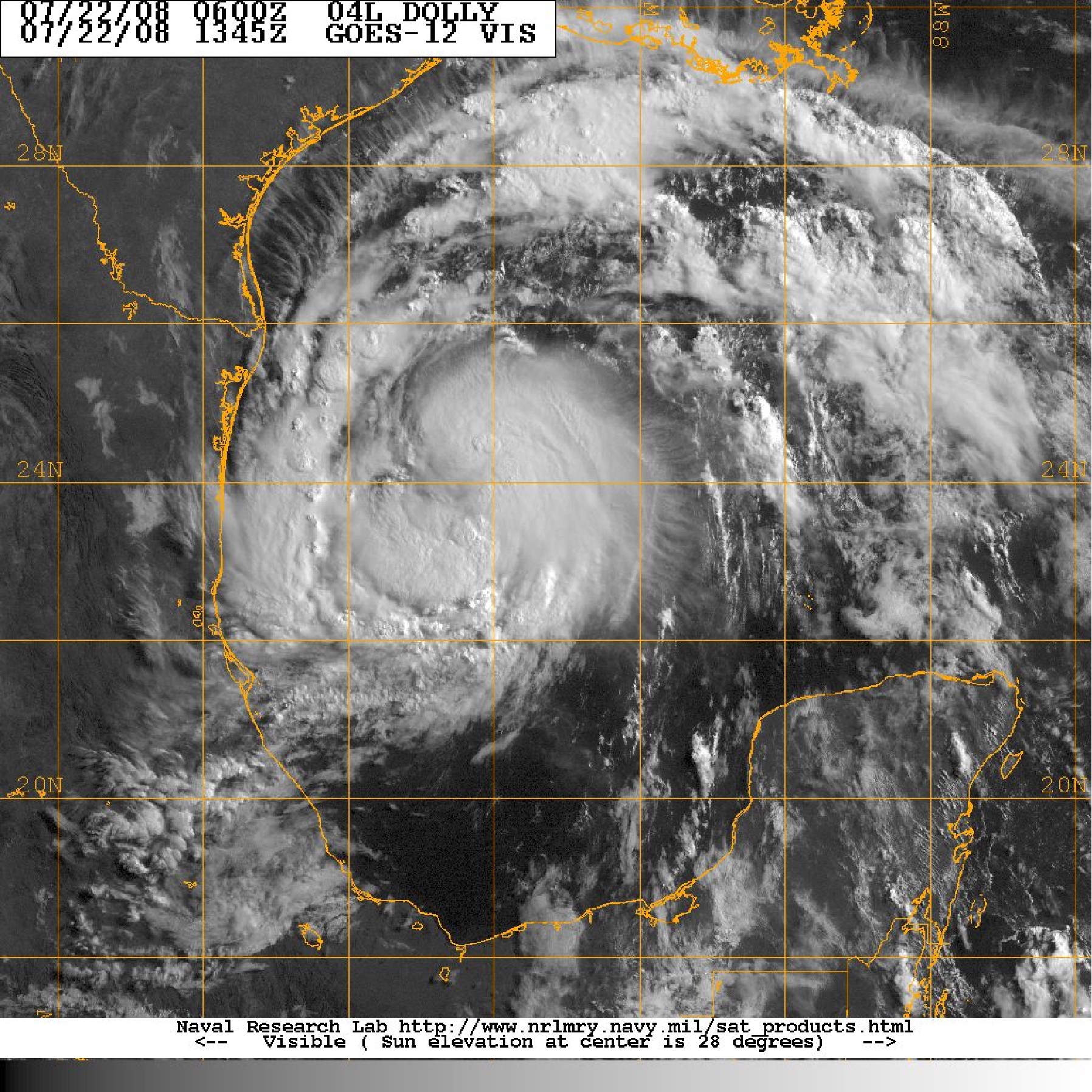
The takeoff was on time at 0851 UTC and N42 headed southwest to an IP 105
nmi NE of Dolly’s center, which was reached at 1105 UTC. The leg inbound was
from the NE to SW to the center and was aligned along an array of AXBT
locations that N43 dropped on the flight earlier. We released 5 AXBT and
dropsonde locations along this leg, including one in the center (eye) which
measured a surface pressure of 993 mb. The SST measurements were still about
28.5° C, about the same as the observations made 12 hours earlier. The
center, at 23.7°N, 94.0°W, was reached at 1128 UTC and the plane
continued to the SW, releasing 3 more sondes at the RMW and mid- and end point
of the outbound leg. The plane turned east at 1154 UTC (SW point) for a
location 105 nmi SE of the eye which occurred at 1224 UTC where a sonde-AXBT
combination were released. Our second pass was from the SE to NW, started at
1225, the center was at 1250, and the NW endpoint was at 1312 UTC. Six sondes
(RMW, mid- and end point), and 3 AXBTS (NW portion) were released along this
pass through the center (1250 UTC). N42 headed south from 105 nmi NW of Dolly's
center and descended to 5 kft to a point 105 nmi west of the eye, reached at
1329 UTC. On our last pass from W-E, 5 sondes and 4 AXBTS were released. The
sondes were at the western RMW, eye, eastern RMW, mid point, and endpoint of
the eastern outbound leg. The AXBTS we dropped at the sonde location of the
eastbound outward leg. A dropsonde in the eye measured 991 mb a the surface
at, 2 mb lower than 2 hours earlier. After reaching our eastern most point
at 1410, the aircraft climbed up to ferry altitude and headed back to base
and landed back at MacDilll at about 1730 UTC.
Figure 1 shows the flight track and precipitation pattern from the LF radar
on a 480 x 480 km domain. Dolly was now a strong tropical storm with a radar
eye clearly visible. Flight-level, SFMR, and dropsonde wind measurements all
indicated that the maximum surface winds were close to 60 kt, just below
hurricane strength. There were no meteorological surprises on this flight as
Dolly was a slowly- evolving and strengthening storm during the time of our
flight. We suspected that Dolly would quickly gain hurricane status, which it
did. We were able to successfully complete 3 Doppler radar analyses during the
flight and transmit the products to computers on the ground.
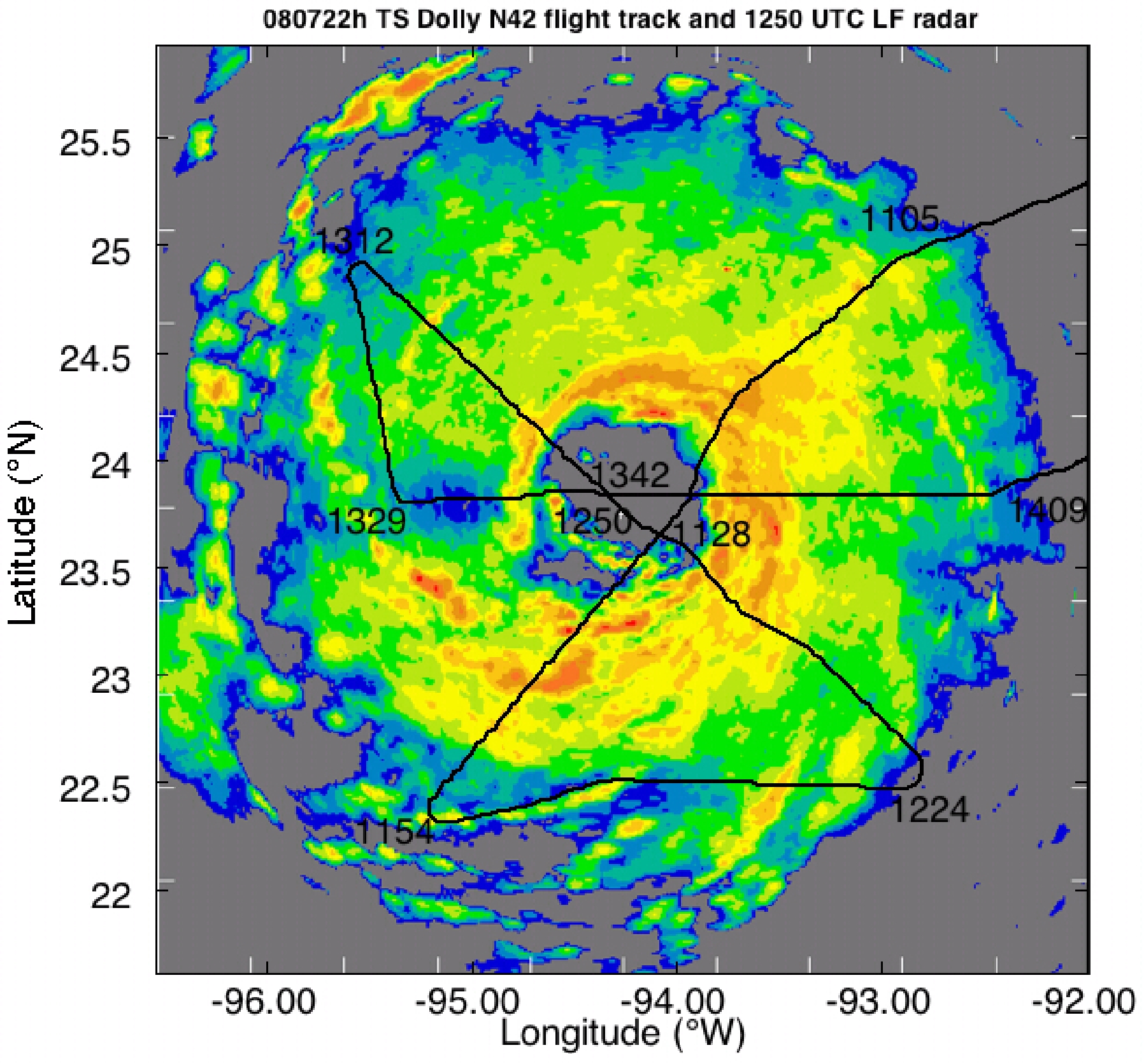
Figure 1. Track of N42 overlaid on LF imagery. Times in UTC for the leg
endpoints and center crossings are denoted along the track.
Figure 2 shows the flight-track with SFMR wind barbs (kt) along the track and
locations of the 11 of the 12 AXBTs and 18 of the 19 dropsondes that were
released (the last one is just to the east of the point labeled 1409). Center
crossing were at 1128, 1250, and 1342 UTC. Dropsonde winds well above the
surface were >65 kt but the SFMR and sondes showed 60 kt at the surface.
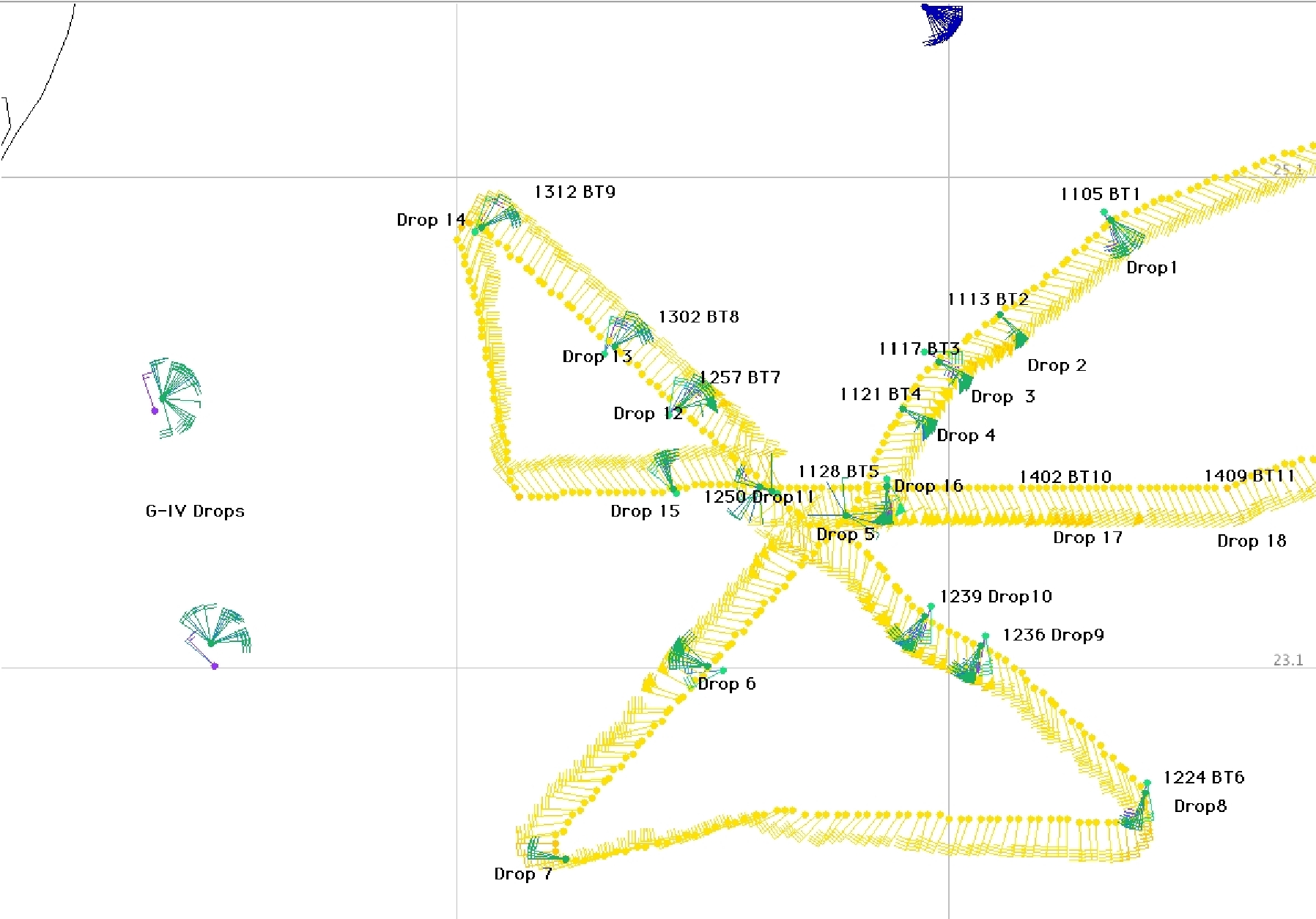
Figure 2. N42 flight track showing SFMR surface winds, AXBT (BT), GPS
dropsonde (Drop) locations, and times of these drops along the track.
Problems :
The radar, flight-level, SFMR, and dropsonde systems all worked well on this
flight. All 18 of the dropsondes were good as were the 12 AXBTS. All three of
the real-time Doppler analysis looked good and were transmitted. NESDIS
reported that their instrument functioned well. Overall, a very successful
mission.
Michael Black
08/27/08
Mission Data :
1 second data file |
NetCDF data file
Page last updated September 2, 2008
Return to Mission page.




